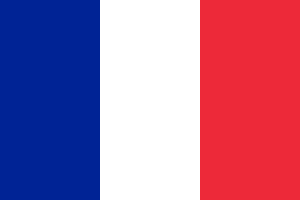Difference between revisions of "Language/French/Vocabulary/Food-and-Eating-Habits"
m (Quick edit) |
m (Quick edit) |
||
| Line 1: | Line 1: | ||
<span pgnav> | |||
{| class="wikitable pg_template_nav" | |||
|[[Language/French/Vocabulary/Romantic-Relationships|◀️ Romantic Relationships — Previous Lesson]] | |||
|[[Language/French/Vocabulary/Beverages-and-Drinking-Habits|Next Lesson — Beverages and Drinking Habits ▶️]] | |||
|} | |||
</span> | |||
{{French-Page-Top}} | {{French-Page-Top}} | ||
| Line 112: | Line 119: | ||
{{French-Page-Bottom}} | {{French-Page-Bottom}} | ||
<span links></span> | <span links></span> | ||
<span pgnav> | |||
{| class="wikitable pg_template_nav" | |||
|[[Language/French/Vocabulary/Romantic-Relationships|◀️ Romantic Relationships — Previous Lesson]] | |||
|[[Language/French/Vocabulary/Beverages-and-Drinking-Habits|Next Lesson — Beverages and Drinking Habits ▶️]] | |||
|} | |||
</span> | |||
Revision as of 17:11, 29 March 2023
| ◀️ Romantic Relationships — Previous Lesson | Next Lesson — Beverages and Drinking Habits ▶️ |
French cuisine is one of the most diverse and revered in the world, and understanding the vocabulary behind France's delicious foods and eating habits is essential for anyone looking to delve into the language and culture. In this lesson, you will learn the French vocabulary related to food and eating habits.
Finish this lesson and explore these related pages: Beverages and Drinking Habits & Bird.
French Meals
French meals typically consist of three courses: the entrée, plat principal, and dessert.
Entrée
The entrée refers to the starter, or the first course of a French meal. It is typically a small, light dish designed to awaken the appetite for the main course.
| French | Pronunciation | English |
|---|---|---|
| hors-d'œuvre | (or-durve) | appetizer |
Examples:
- Saumon fumé : Smoked salmon
- Soupe à l'oignon : Onion soup
Plat principal
The plat principal is the main course of a French meal, and it is typically the largest and most substantial part of the meal.
| French | Pronunciation | English |
|---|---|---|
| viande | (vyahnd) | meat |
Examples:
- Poulet rôti : Roast chicken
- Bœuf bourguignon : Beef stew in red wine
Fromages
Fromages refers to the French cheese course. French people love their cheese and there are over 350 different varieties to choose from, varying from hard cheeses to soft cheeses.
Examples:
- Camembert: Soft, creamy cheese
- Roquefort: Blue cheese
Dessert
The dessert course marks the end of the meal, and it usually consists of something sweet or fruit.
| French | Pronunciation | English |
|---|---|---|
| gateau | (gah-tow) | cake |
Examples:
- Crème brûlée : Custard dessert with caramelized sugar topping
- Tarte Tatin : Caramelized upside-down apple tart
Common French Foods
In France, people often buy fresh produce daily, and shopping at a local marché (market) is a much-loved ritual. Here are some popular French foods:
- Croissant - a flaky, buttery pastry enjoyed for breakfast or as a snack
- Escargots - edible snails, typically served in their shells with garlic butter
- Quiche Lorraine - egg and cheese savory tart with bacon
- Ratatouille - a vegetable stew made with eggplant, zucchini, peppers, onions and tomatoes
Eating Habits and Customs
French people have a unique relationship with food, and eating is an important part of their culture. Here are some important eating habits and customs:
- The French take their time eating and it's generally considered impolite to rush through meals.
- Meals are often accompanied by wine, which is considered a natural partner to food.
- The French savor their food and they consider it an art form. Therefore, tipping in France is not customary, as it is the job of the chef to provide an excellent dining experience.
Conclusion
In this lesson, you have learned the French vocabulary related to food and eating habits. French cuisine and customs are an integral part of French culture, and by familiarizing yourself with this vocabulary, you can enrich your understanding of the language and the people who speak it.
Sources
- French Food Vocabulary: 'La Nourriture'
- The eating habits of the French + vocabulary
- French Food Vocabulary - Lawless French Lesson
Excellent job on conquering this lesson! Consider delving into these related pages: Fish and Seafood & Travel.
Other Lessons
- Common abbreviations
- Months of the Year
- Countries and Continents
- School
- Trees
- Food
- Flowers
- longest word
- Health
- Farm and Agriculture
| ◀️ Romantic Relationships — Previous Lesson | Next Lesson — Beverages and Drinking Habits ▶️ |
